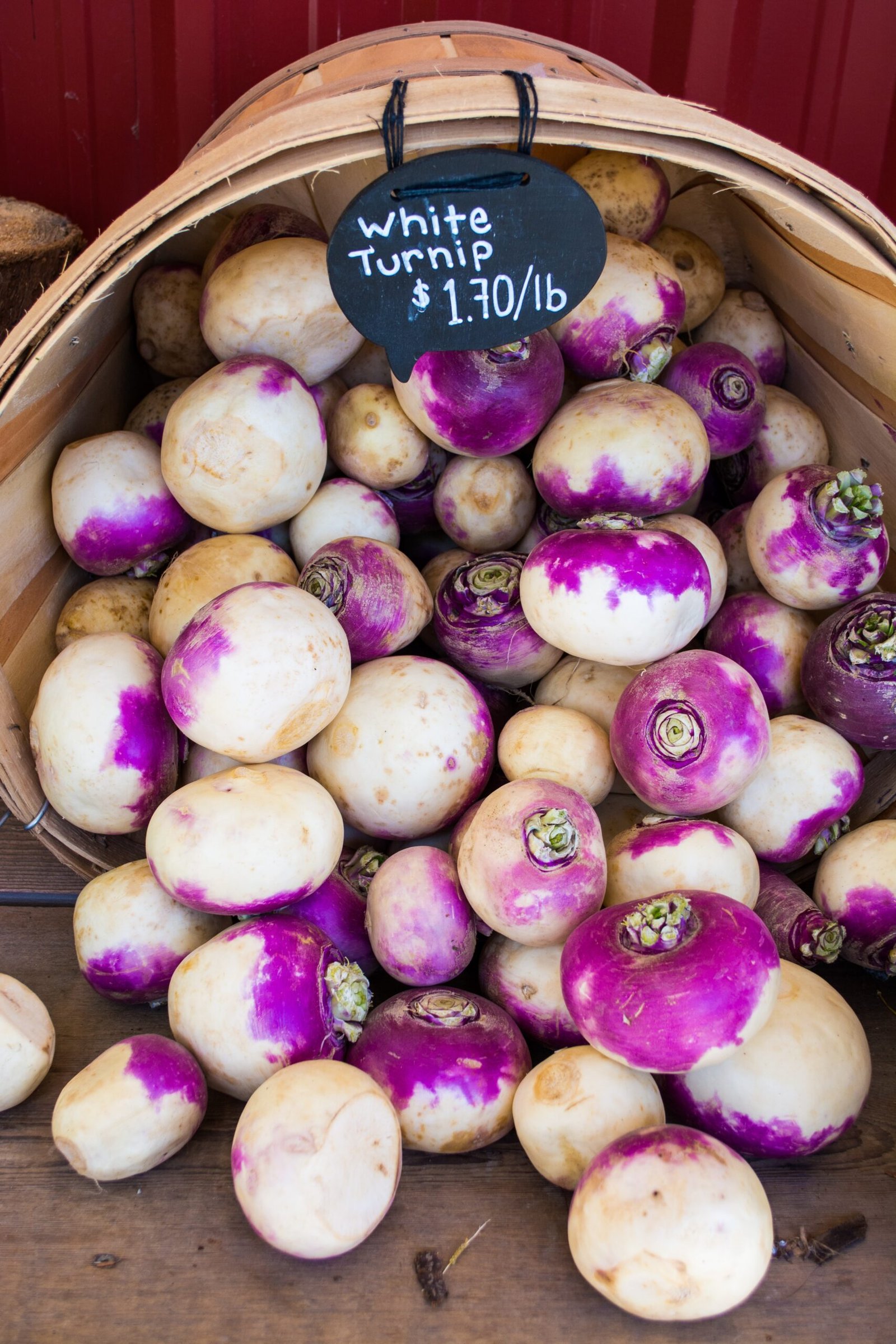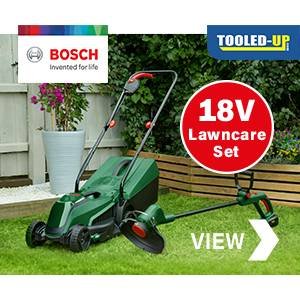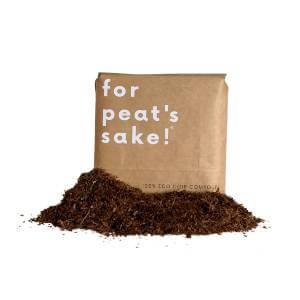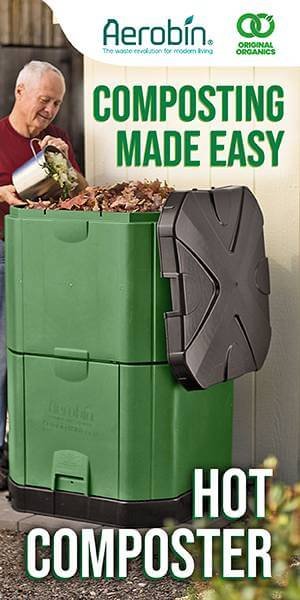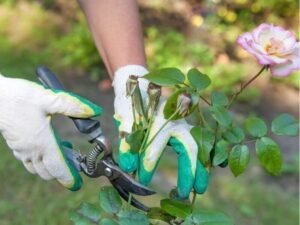Learn how to grow turnips in your garden. This blog post provides step-by-step instructions on sowing and planting turnip seeds, the best soil type for turnips, how to grow from seed, planting out, harvesting, and storing turnips. It also addresses common problems with growing turnips and provides tips on where to buy turnip seeds and the best varieties to grow. Find answers to frequently asked questions about growing turnips and discover the essential tools you’ll need. Start growing your own delicious turnips at home today!
Sowing and Planting
Turnips are a versatile and easy-to-grow vegetable that can be enjoyed in a variety of dishes. To get started, follow these simple steps:
- Choose a sunny spot in your garden or allotment, as turnips thrive in full sunlight.
- Prepare the soil by removing any weeds and adding organic matter, such as compost or well-rotted manure, to improve its fertility.
- Sow turnip seeds directly into the prepared soil from early spring to mid-summer, following the packet instructions for spacing and depth.
- Water the seeds gently and keep the soil consistently moist throughout the germination period.
Soil Type
Turnips prefer well-drained soil with a pH level between 6.0 and 7.5. They can tolerate a wide range of soil types, but sandy loam or loamy soil with good organic matter content is ideal for optimal growth.
How to Grow from Seed
Turnips are commonly grown from seeds, which can be easily obtained from garden centers or online seed suppliers. Here’s how to grow turnips from seed:
- Start by filling seed trays or small pots with a good quality seed compost.
- Sow the turnip seeds thinly and cover them with a thin layer of compost.
- Water the seeds gently and place the trays or pots in a warm, well-lit area.
- Once the seedlings have developed their first true leaves, transplant them into individual pots or into the garden.
How to Plant Out
When the turnip seedlings are around 10cm tall and have a few leaves, it’s time to plant them out in the garden. Follow these steps:
- Choose a planting location with well-drained soil and enough space for the turnips to grow.
- Make small holes in the soil, spacing them according to the variety’s recommended spacing.
- Gently lift the seedlings from their pots, being careful not to damage the roots.
- Place each seedling in a hole, ensuring that the base of the leaves is level with the soil surface.
- Water the newly planted seedlings thoroughly and keep the soil moist throughout the growing season.
How to Harvest
Turnips are ready to harvest when the roots reach the desired size, usually around 6-10 weeks after sowing. Follow these steps to harvest your turnips:
- Gently loosen the soil around the base of the turnip with a garden fork or trowel.
- Hold the leaves and pull the turnip out of the ground, taking care not to damage the roots.
- Trim off any excess leaves, leaving a small amount of foliage attached to the turnip.
How to Store
Turnips can be stored for several weeks if handled properly. Here’s how to store them:
- Remove the tops from the turnips, leaving about an inch of stem attached.
- Place the turnips in a cool, dark, and well-ventilated area, such as a root cellar or a refrigerator.
- Check the turnips regularly and remove any that show signs of rot or decay to prevent them from spoiling the others.
Problems in Growing Turnips
While turnips are generally easy to grow, they can be susceptible to a few common pests and diseases. Here are some potential issues you may encounter:
- Aphids: These small insects can be controlled by spraying the affected plants with a gentle soap solution.
- Clubroot: This fungal disease can cause stunted growth and malformed roots. To prevent clubroot, ensure proper crop rotation and avoid planting turnips in the same area for consecutive years.
- Flea beetles: These tiny beetles can chew small holes in the leaves. To deter them, cover the plants with a fine mesh netting or use an organic insecticide.
Where to Buy
You can purchase turnip seeds from various sources, including garden centers, online seed suppliers, and even local farmers’ markets. Look for reputable sellers that offer a wide range of turnip varieties suitable for your region.
Best Varieties to Grow and Why
When choosing turnip varieties to grow, consider your preferences and the growing conditions in your area. Some popular turnip varieties in the UK include:
- Scarlet Queen: This variety is known for its vibrant red skin and crisp, sweet flesh.
- Purple Top Milan: It produces small, round turnips with a purple top and white base. They have a delicate flavor and are great for salads or roasting.
- Globe: These turnips have a globular shape and are ideal for boiling, steaming, or mashing.
Tools You’ll Need to Grow Turnips
Fortunately, growing turnips doesn’t require any specialized tools. Here are some handy tools that will make the process easier:
- Garden fork or trowel for planting and harvesting
- Watering can or hose for watering the plants
- Garden rake for preparing the soil
- Netting or organic insecticide for pest control
Frequently Asked Questions
Q: Can I grow turnips in containers?
A: Yes, turnips can be grown in containers as long as they have enough space for the roots to develop.
Q: How often should I water my turnip plants?
A: Keep the soil consistently moist, but avoid overwatering, as it can lead to rotting.
Q: Can I eat turnip greens?
A: Absolutely! Turnip greens are nutritious and can be enjoyed in salads, stir-fries, or sautéed as a side dish.
Q: When is the best time to sow turnip seeds?
A: Sow turnip seeds from early spring to mid-summer for a continuous harvest throughout the growing season.
Q: How long does it take for turnips to mature?
A: Turnips usually take around 6-10 weeks to mature, depending on the variety and growing conditions.
Now that you have all the information you need, it’s time to get your hands dirty and start growing your own delicious turnips at home. Happy gardening!

